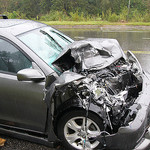Here are four tips you can use to determine whether you have sufficient auto insurance coverage. In the grand scheme of things, you want your auto insurance policy to protect your assets in the event you are in an accident with serious bodily injury. This protection, however, should be at the lowest cost possible.
The four tips are listed in order of importance.
1. What is the amount of bodily injury liability coverage?
This amount is the most your policy will pay the other party for bodily injury in the event of an auto accident. Often bodily liability coverage is quoted as two numbers: per individual and per accident. So $100,000/$300,000 in coverage means the policy will at most pay $100,000 to an injured individual and $300,000 in total for the accident, even if it involves more than three people. Make sure the upper limit matches your net worth so that your assets are protected. If you have net worth of $500,000 and you have a $100,000/$300,000 policy, then you may be responsible for $200,000 if there is a serious accident with substantial bodily injury and the other party comes after your assets. The insurer, not you, should be on the hook for this coverage. Consider matching your bodily injury coverage amount with your net worth.
2. What are the deductibles?
Deductibles are the amount you pay before the insurer pays under the policy for property damage to your auto. The deductibles are often quoted for collision and comprehensive. Collision involves those instances when you collide, for example, with another car. If the deductible is $250, then you pay the first $250 to repair your auto and the insurer picks up the difference up to the value of the car. The higher your deductible, the lower your premium.
Comprehensive involves non-collision instances, such as auto theft or hail damage. I often see policies in which the deductible for comprehensive is very low, such as $50 or $100. Remember, a low deductible means a higher premium. I often suggest deductibles of $500 or $1,000. If your car is not worth much, consider eliminating this coverage. For example, if you have a $1,000 deductible on a car worth $1,500, it really won’t be practical to get $500 to fix a car without value. Consider setting the deductible for the highest amount you could manage to pony up out-of-pocket. And if you can, bank that amount so that you have it handy.
3. Do you have under- and uninsured coverage?
These features protect you from the other party in an accident having low or no bodily injury liability coverage. In these instances, you may have an accident and suffer serious bodily injury, but the other party can’t pay because they have low or insufficient coverage and they have few assets. If you don’t have under and uninsured coverage, then you will be responsible for the expenses to heal your injuries. You will have the opportunity to try to recover damages, but most under- and uninsured drivers are not rich people. Consider under- and un-insured coverage that matches liability coverage (discussed above in item 1). These two coverages are even more important now that nearly 1 in 7 folks don’t have sufficient coverage according to recent estimates.
4. Do you have a homeowners or renters policy?
Insurers often provide discounts if you have multiple lines of coverage. You may have a homeowner’s policy or a renter’s policy. Consider consolidating your policies at one insurer to obtain a multi-line discount.
Check these four items in your auto policy to make sure you have sufficient automobile insurance that protects your assets.



No comments yet.